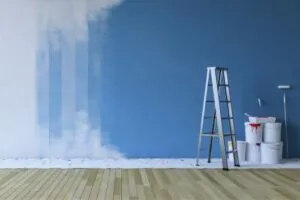If asking about limewash vs. whitewash for your home’s exterior, it is important to understand their differences. Limewash, known for its durability and breathability, is ideal for brick surfaces and offers a unique, textured look. Whitewash, a simpler mixture, provides a classic, uniform appearance but may need more frequent touch-ups. Selecting the best that works for your home’s exterior will be easier after learning more about each option.
I. What Exactly is Limewash?
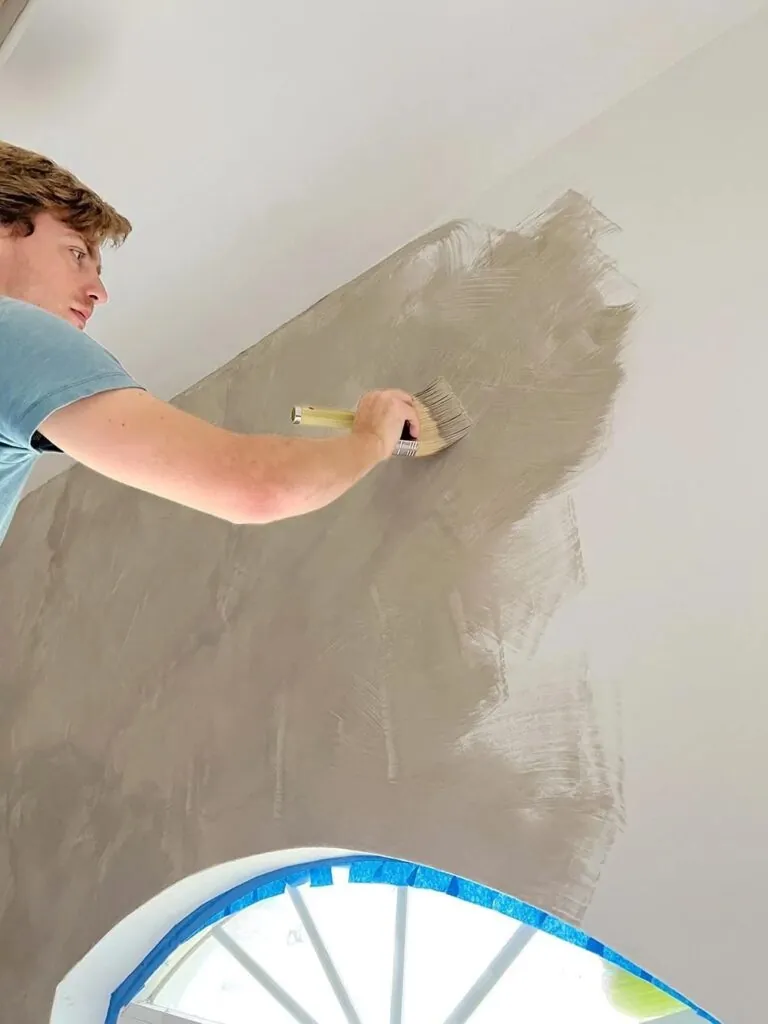
Limewash is a paint made from lime and water, creating a breathable coating ideal for porous surfaces like brick. It is considered environmentally friendly due to its natural components, including calcium carbonate, which has a lower environmental impact compared to modern paints.
Limewash penetrates the surface rather than just coating it, preserving the brick’s natural texture, and developing a weathered look over time. Additionally, the high pH level of lime helps deter mold and bacteria, making it a practical choice for various environments. This paint is suitable for both interior and exterior use, offering durability and a distinctive finish.
II. Advantages of Using Limewash on Exterior Brick
Limewash is an effective choice for enhancing exterior brick surfaces. It uses calcium hydroxide, which bonds well with bricks and mortar. It offers several advantages that homeowners can enjoy for years.
A. Minimal Maintenance Requirements
Limewash is highly valued for its minimal upkeep needs. Due to its high pH, it naturally repels fungi, reducing the frequency of touch-ups compared to conventional paints. The lime in the mixture bonds effectively with brick, wood, and plaster, which helps prevent peeling and flaking. This durability results in a longer-lasting finish with fewer maintenance requirements, making it a practical choice for protecting exterior surfaces over time.
B. Natural Bacteria Resistance
Limewash’s high alkalinity makes it resistant to bacteria and mildew, which is especially beneficial in moisture-prone areas like bathrooms. Its application creates a protective hard coating that enhances its ability to repel bacterial growth. This characteristic is very desirable in areas exposed to heat or occasional sparks, as limewash remains effective in maintaining a cleaner and healthier environment.
C. Appealing Aging Characteristics
Limewash develops a unique patina over time, which many find visually appealing. Unlike other coatings, limewash softens and enhances the brickwork’s character as it weathers, adding a timeless quality to the exterior. This natural aging process is prized by those who appreciate its authentic, historical appearance. This is just one of the features that makes limewash a preferred choice for both aesthetic and practical reasons.
D. Cost-Effective and Environmentally Friendly
Limewash is a cost-effective option for brick and stucco surfaces, offering a durable, breathable finish that helps prevent mold build-up. Its ability to naturally release moisture reduces maintenance costs over time. Additionally, limewash’s environmentally friendly nature supports sustainable practices by using natural ingredients, making it a budget-friendly and eco-conscious choice for outdoor and furniture applications.
E. Variety of Natural Hues Available
Limewash offers a range of natural colors derived from mineral pigments, which can enhance various architectural styles. Its color palette integrates seamlessly with both rustic and modern designs, providing a cohesive look that complements natural materials. Unlike synthetic paints, limewash’s hues blend well with diverse elements, adding a sophisticated touch to home exteriors while maintaining long-lasting visual appeal.
III. Drawbacks of Limewashing Exterior Brick
Limewash-painted brick presents a timeless appeal, but it’s not without its challenges. Understanding these limitations is crucial before deciding to go with this option. By learning about limewash, you can better appreciate its unique characteristics and make an informed choice for your property. This knowledge ensures you choose the right finish that meets your aesthetic and practical needs.
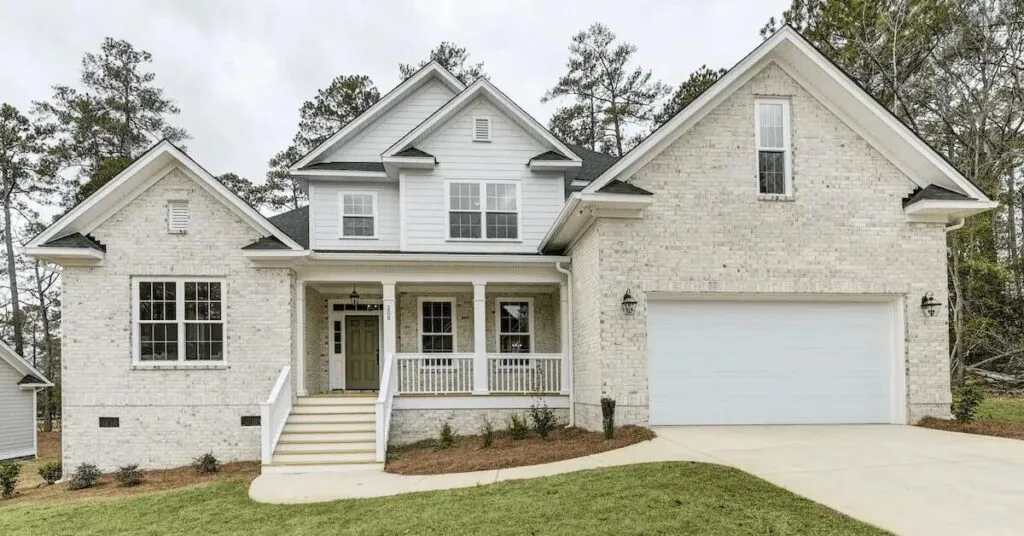
A. Difficulty in Achieving Uniform Appearance
Applying limewash can be challenging, as achieving a consistent look across a large surface requires skill. Limewash interacts with the wall’s texture, which can lead to streaks and uneven color. To get the best result, surfaces often need thorough cleaning and a primer to ensure proper adhesion. Without these preparations, heat and humidity can highlight imperfections, making it difficult to achieve the smooth, uniform appearance many homeowners desire.
B. Labor-Intensive Process
Limewashing involves more than just applying paint; it’s a detailed exterior painting process requiring careful application. For techniques like German schmear, professionals must apply overlapping strokes precisely to enhance the exterior’s appearance. The process can be time-consuming, especially for larger areas, requiring patience and attention to detail. Every surface needs to be covered evenly to transform a plain wall into an attractive feature that complements its surroundings.
C. Limited Color Palette
Limewash typically offers a limited range of earthy tones, which may not suit every design scheme. For vibrant or varied color needs, limewash’s subdued palette might not be ideal. While limewash is effective at resisting mold and fungi, its restricted color options can limit creative possibilities for homeowners seeking more vivid or diverse hues in their renovation projects. It is good for a backdrop or a base color but doesn’t work well as an accent wall or paint color.
D. Incompatibility with Pre-Painted Brick
Limewash does not adhere well to surfaces that have been previously painted. It needs to penetrate the brick to form a durable bond, which is impossible over existing paint. This limitation makes limewash less versatile compared to whitewash, which can be applied over painted surfaces. Understanding this restriction is crucial when choosing limewash for homes with pre-painted exteriors to ensure that it works well with existing paint and finishes.
Similar Post: Acrylic vs Alkyd: What Is the Best Exterior Trim Paint?
IV. Defining Whitewash
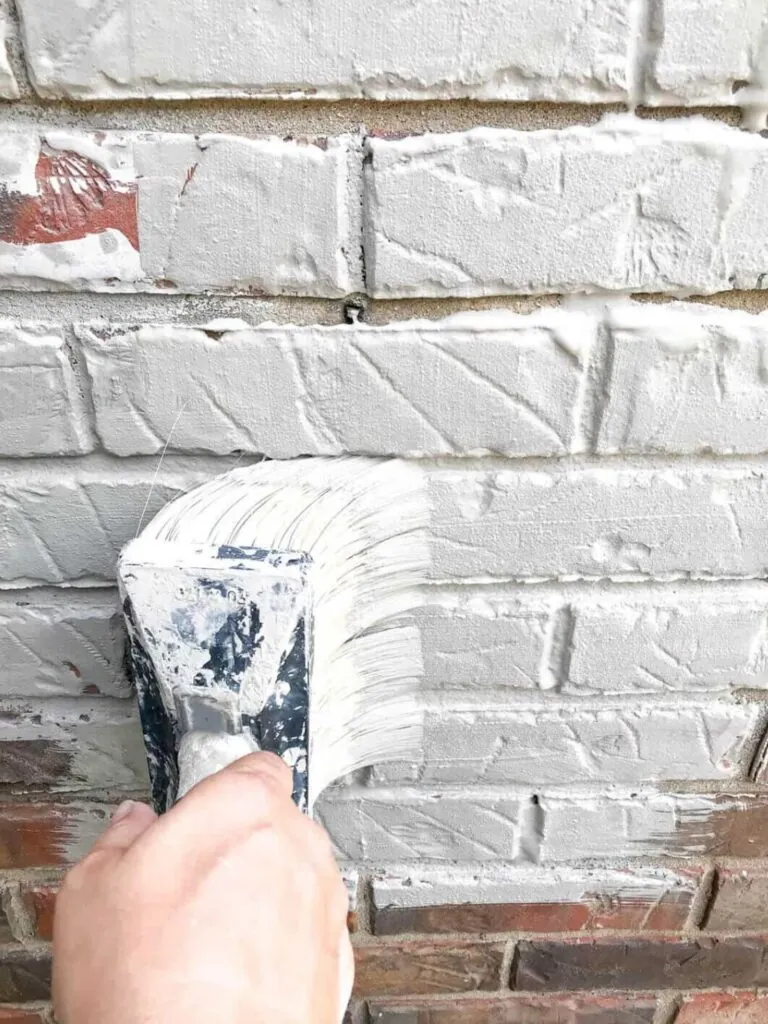
Whitewash, commonly used on farmhouses and cottages, is a paint made from lime, salt, and water. It creates a thin, translucent coating that gives a bright, casual look to surfaces like wood and brick. Known for its protective qualities and visual appeal, whitewash reflects sunlight, helping to keep buildings cooler, especially in hot climates. Unlike limewash, which penetrates the surface, whitewash sits on top, forming a barrier against moisture. It dries to a white matte finish and can be tinted to match various design styles. Whitewash brick is generally easier to apply than limewash, making it a practical choice for larger projects.
V. Benefits of Whitewashing Brick Exteriors
Turning our attention to whitewashing brick exteriors, it provides a bright, clean finish with a protective layer against moisture. It reflects sunlight, which helps keep buildings cooler, especially in hot climates. For those considering different options, limewash also offers unique benefits.
A. Smooth Surface Finish
Whitewash provides a sleek, smooth finish that enhances the appearance of brick exteriors with a clean, polished look. This uniform application effectively conceals imperfections, presenting a consistent surface that is visually appealing. Unlike limewash, which creates a textured effect, whitewash delivers a more refined aesthetic, ideal for homeowners seeking a simplistic and sophisticated appearance for their property’s facade.
B. Durable and Low Maintenance
Whitewash is renowned for its durability, offering long-lasting protection that endures various weather conditions. This resilience minimizes the need for frequent repainting, thus reducing maintenance efforts over time. Its ability to maintain its appearance despite exposure to the elements ensures that the exterior remains fresh and intact, making it a practical choice for enduring performance with minimal upkeep.
C. Versatile for Pre-Painted Brick
Whitewash is effective for application over previously painted brick surfaces, making it a flexible solution for updating or refreshing a home’s exterior. This capability eliminates the need to remove old paint or apply a primer, facilitating a straightforward renovation process. Its adaptability simplifies the updating of existing painted surfaces, providing an efficient way to achieve an updated exterior paint scheme. This significantly adds to its overall popularity.
D. Unlimited Color Options
Whitewash offers extensive color flexibility, allowing homeowners to achieve a wide range of shades and tints. This adaptability supports various design preferences, from vibrant hues to subtle pastels. The ability to customize colors makes whitewash a versatile choice for matching exterior aesthetics with personal style or architectural requirements. This feature helps to provide extensive options and enhanced control over the final appearance.
E. Comprehensive Coverage
Whitewash delivers thorough and even coverage, effectively concealing surface defects and providing a uniform appearance. Its application ensures that every area of the brick surface is adequately covered, offering robust protection against environmental factors. This complete coverage enhances the overall look of the property, safeguarding the brick work and contributing to a well-maintained and visually appealing exterior.
Related Post: The Impact of Two-Toned Exterior Color Schemes
VI. Disadvantages of Whitewashing Brick Exteriors
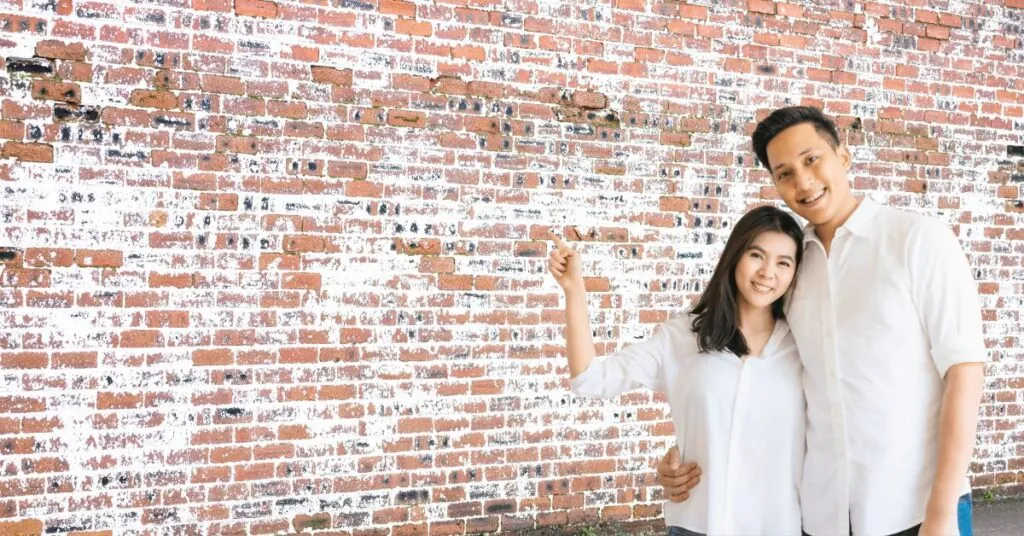
Whitewashing brick exteriors can present several challenges. It may require more frequent maintenance compared to other finishes, and its effectiveness can be affected by environmental conditions.
A. Higher Costs for Larger Areas
Whitewashing extensive brick exteriors can be expensive due to the large quantities of materials needed. Costs increase with the size of the area being treated, making it a significant investment for expansive surfaces. Additionally, professional application may be required to ensure an even finish, further increasing expenses. Property owners should factor in these costs when planning to whitewash large exterior spaces.
B. Potential for Moisture Issues
Whitewash can create moisture problems if not applied correctly. An improper application might trap water inside the brick, leading to potential damage over time. The brick’s natural ability to breathe and release moisture can be hindered by a thick whitewash layer, raising the risk of trapped dampness and structural issues. Proper application and attention to the brick’s porosity are crucial.
C. Difficulty in Removal if Desired
Removing whitewash from brick can be challenging and labor-intensive. Unlike paint that sits on top of surfaces, whitewash penetrates the brick, making it hard to strip away without damaging the brick itself. Abrasive methods needed for removal can compromise the brick’s surface, complicating future aesthetic changes or restorations. This factor should be considered before applying whitewash.
D. Consistency Challenges in DIY Projects
Achieving a consistent and professional finish with a whitewash can be difficult for DIY enthusiasts. Variations in brush strokes and coverage are common without experienced application. The process requires precise mixing and application techniques that may be challenging for beginners, resulting in an uneven appearance. Expertise is often needed to ensure a uniform and aesthetically pleasing result.
VII. Deciding Between Limewash vs Whitewash, Consult Us for Free!
Choosing limewash vs. whitewash for your brick exterior comes down to your style, how much maintenance you are up for, and the environment. Limewash gives a naturally aged, eco-friendly look, while whitewash offers a clean, bright finish that usually requires less upkeep. Limewash is great for historical charm, while whitewash fits modern aesthetics. Both have their pros and cons, so understanding the difference between whitewash and lime will help you decide what is best.
At South Shore Painting Contractor, we provide tailored advice to match your home’s style. Get in touch for a free consultation to find the perfect exterior painting solution for your brick project and get a stunning, long-lasting finish.

